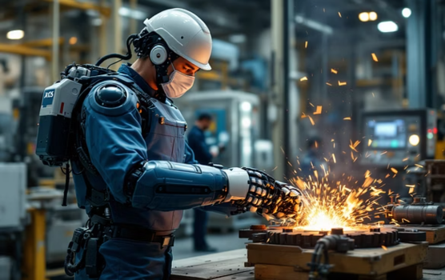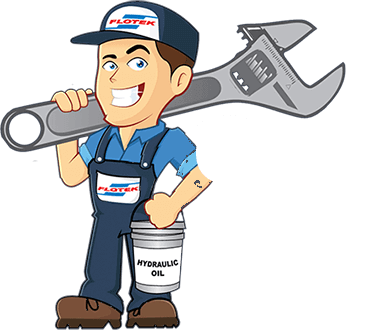Q. What could be more fun, than giving someone Super-human strength?

Hydraulic Exoskeletons are here!
Mechanical marvels that amplify human strength and mobility, hydraulic exoskeletons represent the cutting edge of wearable robotics technology, transforming capabilities across many industries.
What Are They?
Mechanical exoskeletons are wearable machines that use hydraulic actuators to amplify human strength and movement. They function like a mechanical skeleton layered over the human body, allowing the user to lift heavy loads, reduce fatigue, or restore mobility. How good is that!
Why Hydraulics?
Hydraulics are perfect for exoskeletons because they offer:
High power-to-weight ratio – small actuators can produce large forces.
Smooth and precise control of motion.
Durability and reliability in harsh environments (e.g., military, industrial).
Three Real-World Examples
1. Sarcos Guardian XO
A full-body industrial exoskeleton powered by hydraulics.
Allows users to lift 90kg effortlessly, repeatedly, without fatigue.
Used in manufacturing, logistics, and military settings.
Watch this short video on the Guardian XO in action!
2. Raytheon XOS 2
A military-grade exoskeleton prototype.
Uses hydraulics to enhance soldier strength for heavy lifting.
Responds naturally to human motion with sub-millisecond response time.
3. HULC (Human Universal Load Carrier)
Developed by Ekso Bionics and Lockheed Martin.
Hydraulic legs help soldiers carry up to 90kg of gear without strain.
Reduces energy consumption during walking over long distances, as well as climbing.
How Do They Work?
Hydraulic exoskeletons include:
Sensors to detect user intention (via pressure, motion, or EMG).
Hydraulic actuators that move joints like knees, hips, or elbows.
Control systems (sometimes AI-enhanced) to synchronise movement.
Battery or engine power to run the hydraulic pump.
Industrial Benefits
Reduced workplace injuries in heavy-lifting jobs.
Increased endurance for repetitive tasks.
Improved access for workers with mobility impairments.
Medical Applications (in development)
You would think hydraulics would be too heavy for long-term medical use. However they are developing rehab exosuits, utilising miniaturised hydraulic components for:
Stroke recovery
Spinal injury support
Assisted walking
So where is it all heading?
Originally developed for military and heavy-lifting applications, these systems are rapidly evolving, with future developments promising real-world usability across multiple sectors.
$7.3B
Market by 2030
70%
Injury Reduction
35%
Efficiency gain
1. Smarter, Lighter Systems
One of the biggest limitations of traditional hydraulic exoskeletons has been their bulk and weight. Future designs are lighter, and more compact utilising carbon-fiber composites and titanium alloys—and miniaturised hydraulic actuators. These changes aim to reduce operator fatigue, by making exoskeletons viable for use in fields like construction, logistics, and aged care support.
2. Enhanced Control and Precision
Next-generation exoskeletons will integrate AI-driven control systems and sensor feedback loops, enabling smoother, more intuitive movement. Operators will benefit from real-time adjustments in hydraulic pressure based on muscle input or environmental demands. This is particularly valuable in applications requiring fine motor control, such as handling delicate materials or surgical assistance in disaster zones.
3. Industrial and Assistive Expansion
As these systems become more adaptable and affordable, industries such as manufacturing, mining, logistics, and emergency response will increasingly deploy exoskeletons to reduce injury, boost productivity, and extend worker capability. Beyond industrial use, rehabilitation and mobility support applications are expected to grow, offering powered assistance to individuals with limited strength or mobility, especially in aged care or spinal injury recovery.
The future of hydraulic mechanical exoskeletons lies in smart integration: combining strength with agility, brute force with human finesse. As the technology matures, we can expect to see a shift from experimental gear to essential workwear—redefining what the human body can achieve.




